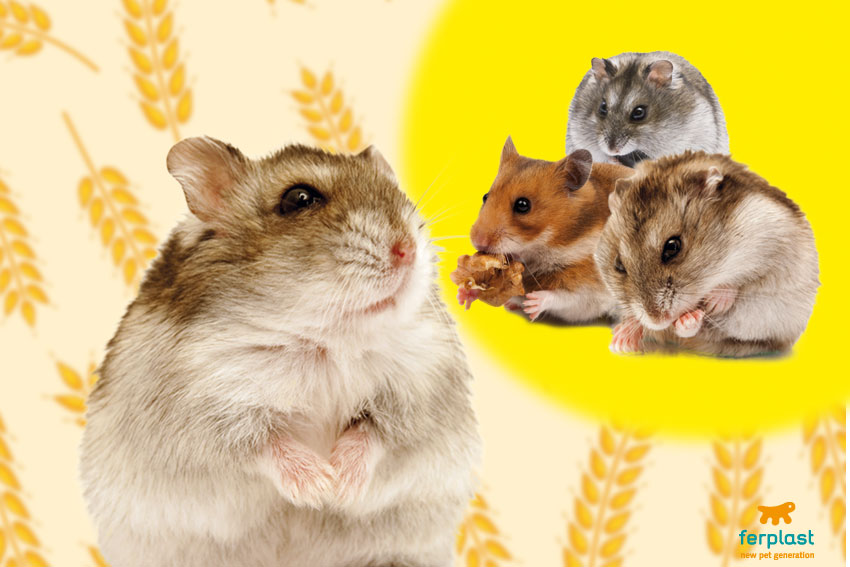Fundamental Traits of Hamster Breeds
Understanding Hamster Varieties
Hamsters are popular pets, beloved for their small size, playful nature, and relative ease of care. However, with numerous breeds available, each possessing unique traits, it can be puzzling to determine which hamster is right for you. In this article, we will explore the main traits of various hamster breeds, allowing prospective pet owners to make informed decisions. Various factors, including behavior, size, lifespan, and care requirements, will be discussed, ensuring a comprehensive understanding of these small creatures.

Popular Hamster Breeds
Understanding the **popular hamster breeds** and their corresponding traits helps in identifying which breed best fits your lifestyle. Among the most recognized varieties are the Syrian, Campbell, Roborovski, and Dwarf hamsters. Each breed flaunts distinct personality traits and care needs. For example, the **Syrian hamster**, also called the golden hamster, is known for its larger size, generally weighing 5 ounces. They are solitary animals and require ample space in their cages, but are relatively easy to handle and socialize. On the other hand, the **Campbell dwarf hamster** is a smaller breed, making them suitable for families with kids. They are known to be social and enjoy companionship with their kind, displayed through playful interaction. This essential knowledge equips potential owners to choose wisely.
Behavioral Traits Across Breeds
The behaviors exhibited by hamsters can differ significantly between breeds. For instance, while Syrian hamsters are typically more docile and friendly, the **Roborovski hamster** is notoriously more spirited and fast-moving. Understanding these **behavioral traits** is crucial, particularly for new owners seeking manageable pets. While some breeds enjoy being held and petted, others may require time to come out of their shells. Patience is vital. Providing a safe, enriching environment equipped with toys and tunnels can aid in socializing and minimizing stress for your new pet. Ensuring that you comprehend their unique needs fundamentally enhances your hamster-keeping experience.
Care Requirements by Hamster Type
Different hamster breeds have unique **care requirements** that pet owners must consider. For example, **Syrian hamsters** thrive best in spacious cages with plenty of bedding to burrow into, while smaller breeds like the dwarf hamsters generally require less space but benefit from having multiple levels in their cages. The dietary needs of hamsters also vary; Syrian diets primarily consist of high-quality pellets and a few seeds or fresh fruits occasionally, whereas dwarf hamsters can enjoy a mixed diet that includes vegetables. Being informed on the specific care protocols for your chosen breed can lead to longer and healthier lives for your furry friends.
Physical Characteristics of Hamster Breeds
Every hamster breed features unique physical characteristics that make them distinct. In this section, we will delve into their size, color variations, and distinctive physical features of popular hamster breeds.
Size Differences Among Breeds
One of the key determining characteristics of hamster breeds is size. Syrian hamsters are the largest—usually measuring between 5 to 7 inches long. Their dimension allows for certain physical traits, such as larger paws and a more robust body, providing a different hold than that of a **Dwarf hamster**, which typically measures around 3 to 4 inches long. Knowing the size discrepancies can be essential when selecting the ideal cage. Overcrowding can lead to behavioral issues, and an appropriately sized habitat contributes significantly to a hamster’s well-being.
Color Variations and Markings
Hamster breeds also boast an array of **color variations**. Syrian hamsters have a classic golden-brown coat, but they may also present in colors such as black, white, and cream, with many sporting patterns. In contrast, **Dwarf hamsters** often feature diverse colors, including agouti (brown with dark tips), Albino, and various other color combinations. These variances not only make each breed visually appealing but can also affect breed recognition in competitions. If you have a preference for a particular hue or pattern, you might consider these traits when selecting your pet.
Distinctive Features of Popular Breeds
In addition to size and color, each breed has unique **distinctive features**. The **Syrian hamster** has prominent cheeks that allow it to store food, while the **Campbell dwarf hamster** is smaller and typically possesses a more delicate frame. Understanding these traits ensures that owners appreciate their pets’ unique appearances while also better meeting their species-specific needs. Being aware of these characteristics contributes to informed choices in care and habitat setups.
Lifespan and Health Concerns in Hamsters
When selecting a hamster, it is crucial to factor in not only their temperament and physical features but also their lifespan and common health issues. Different breeds can exhibit varied life expectancies and associated health problems.
Lifespan of Different Hamster Breeds
On average, hamsters can live between 2 to 3 years, but life expectancy can be breed-specific. For example, **Syrian hamsters** generally live longer than dwarf varieties, often reaching 3 years with good care, while other types may only live up to 2 years. Recognizing these lifespan variations is vital when making a choice. Prospective owners should factor in their commitment to care for the hamster throughout its life.
Common Health Issues Among Breeds
Various **health concerns** are common across different hamster breeds. For instance, Syrian hamsters may be prone to obesity if not given adequate exercise, due to their sedentary lifestyle. Meanwhile, dwarf varieties can suffer from diabetes, particularly when overfed sugary treats. Understanding these intricacies can help owners prioritize preventive care and recognize early signs of health complications, ultimately leading to better health management for their pets.
Monitoring Hamster Health
Success in maintaining your hamster’s health largely depends on consistent monitoring. A significant part of this involves regular veterinary visits and a vigilant eye for any behavioral shifts that may indicate health issues, such as changes in eating habits or reduced activity levels. Establishing a **health monitoring routine** will enable you to promptly address any concerns, ensuring your hamster lives a fulfilling and healthy life.
Key Takeaways
- Understanding the various hamster breeds allows for informed selection based on characteristics like size, behavior, and care needs.
- Physical traits, including size and color, can greatly influence a hamster’s personality and health requirements.
- Hamsters have specific care needs that must match the determined breed to foster health and happiness.
- Monitoring the health and needs of your hamster can help mitigate breed-specific health issues.
FAQ
1. What is the friendliest hamster breed for beginners?
The **Syrian hamster** is often regarded as the friendliest breed for first-time owners due to its generally docile personality and ease of handling. It’s advisable, however, to dedicate time for socialization to build a bond with your pet.
2. Do dwarf hamsters need a companion?
**Dwarf hamsters** can thrive better with a friend; however, it’s essential to introduce them carefully to prevent fights. Some dwarfs enjoy companionship, while others may prefer solitude, so monitor their interaction closely.
3. How can I prevent obesity in my hamster?
To prevent **obesity** in hamsters, provide a balanced diet with appropriate portion sizes and plenty of opportunities for exercise. Toys that encourage physical activity, such as wheels and tunnels, will greatly help.
4. How often should I clean my hamster’s cage?
Regular maintenance is key—aim to clean your hamster’s **cage** at least once a week, removing dirty bedding and changing the food and water. However, spot cleaning should be done more frequently to maintain hygiene.
5. What should I feed my dwarf hamster?
**Dwarf hamsters** thrive on a balanced diet of high-quality pellets, small amounts of fresh fruits and vegetables, and occasional treats. Ensure to limit sugary items to avoid health concerns.
6. Are Roborovski hamsters good pets?
**Roborovski hamsters** can make great pets for experienced owners who enjoy active pets. Their swift movements and energetic lifestyle mean they may not be the best for very young children, but they are entertaining to watch.
7. What is the average lifespan of a Syrian hamster?
The average lifespan of a **Syrian hamster** is around 3 years, provided they receive proper care, a balanced diet, and regular check-ups. Factors like genetics and living conditions can also affect their longevity.
